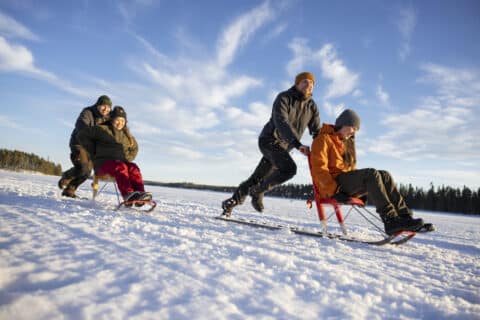Berry and Mushroom Picking
Kuhmo is surrounded by forests and wetlands, offering many opportunities to enjoy nature.
Berry and mushroom picking is an important part of Finnish culture, with a long tradition in Finnish households.
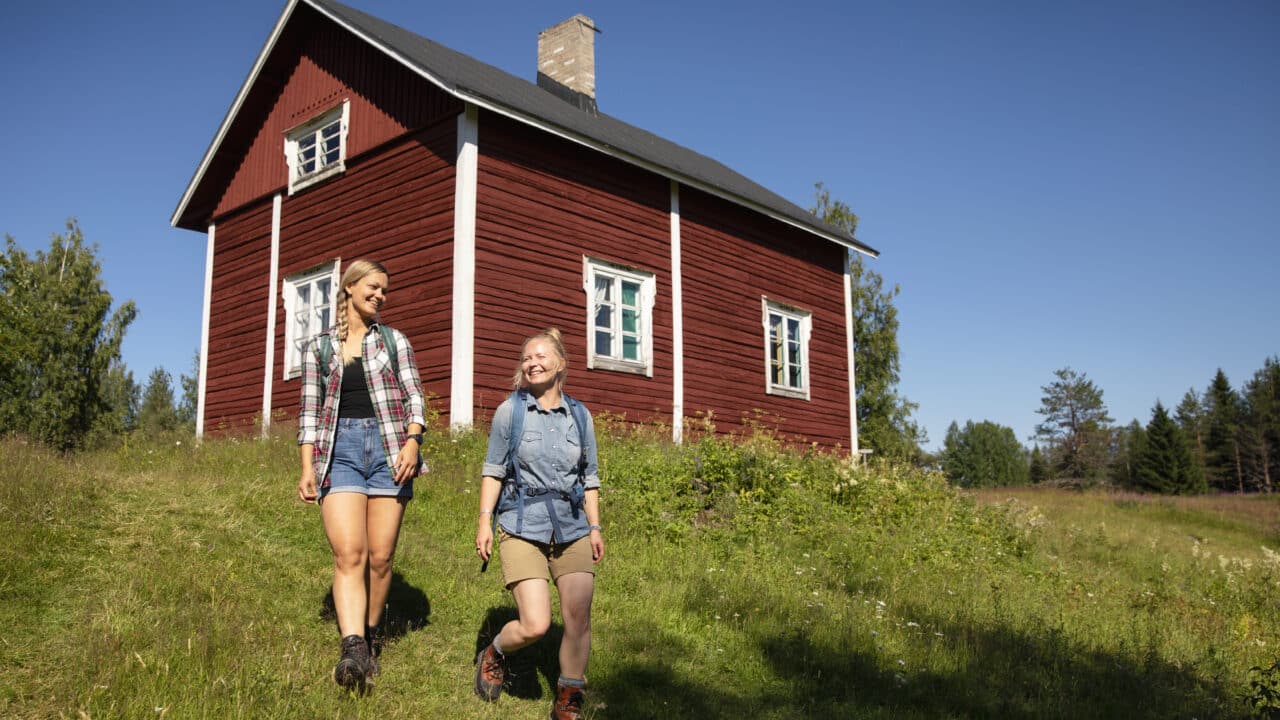
The Many sides of Berry Picking
In Finnish culture, there is a long tradition of gathering food from nature.
Picking wild berries is, for many Finns, an important form of recreation. People collect berries for their own use — to freeze, eat fresh, or even sell. Berry and mushroom picking remain a part of their way of life for many even today.
Berry picking is more popular among people living in rural areas than among city dwellers. The culture of berry picking is strongest in the northern and eastern parts of the country, where participation and the quantities gathered are generally greater than elsewhere.
Doing to nature to pick berries is often part of summer cottage life. Finns enjoy many kinds of outdoor activities that draw them into the forests year after year. Compared to many other countries, growing berries in home gardens is also particularly popular.
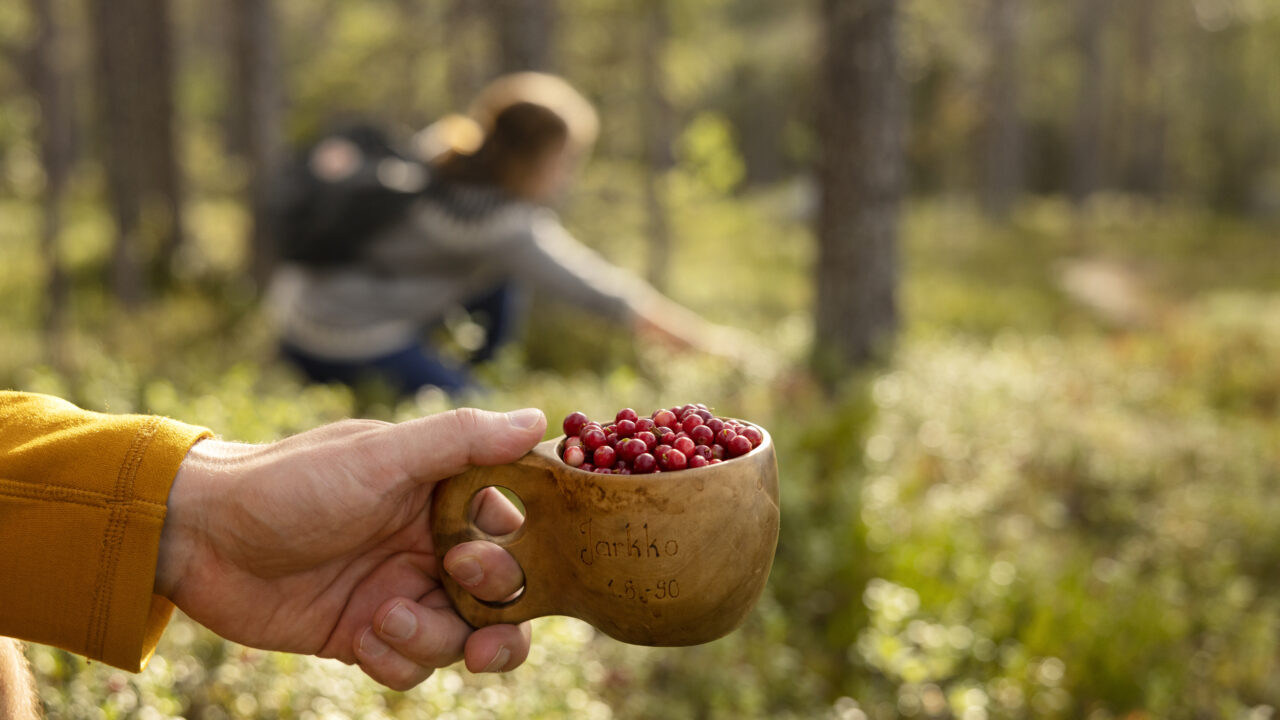
Household self-reliance
For a very long time, self-sufficient households have included berry and mushroom gathering as part of their way of life. For many households, berries and mushrooms picked for personal use have been an important part of their annual food culture and household economy. Berries have also been gathered in large quantities for sale. Today, cloudberries are among the most popular berries for sale due to their higher market price.
Berries can be picked for fresh consumption or preserved in many different ways. They can be frozen, mashed, dried, made into jam, or processed into juice, for example.
See the Finnish Martha Organization’s guidelines for berry preservation.
Everyone’s Right
In Finland’s forests, anyone is free to pick berries and mushrooms for personal use. The Everyone’s Right grants the freedom to enjoy nature without the landowner’s permission or payment. However, when exercising this right, one must not cause harm or disturbance to the landowner, land use, nature, or other people.
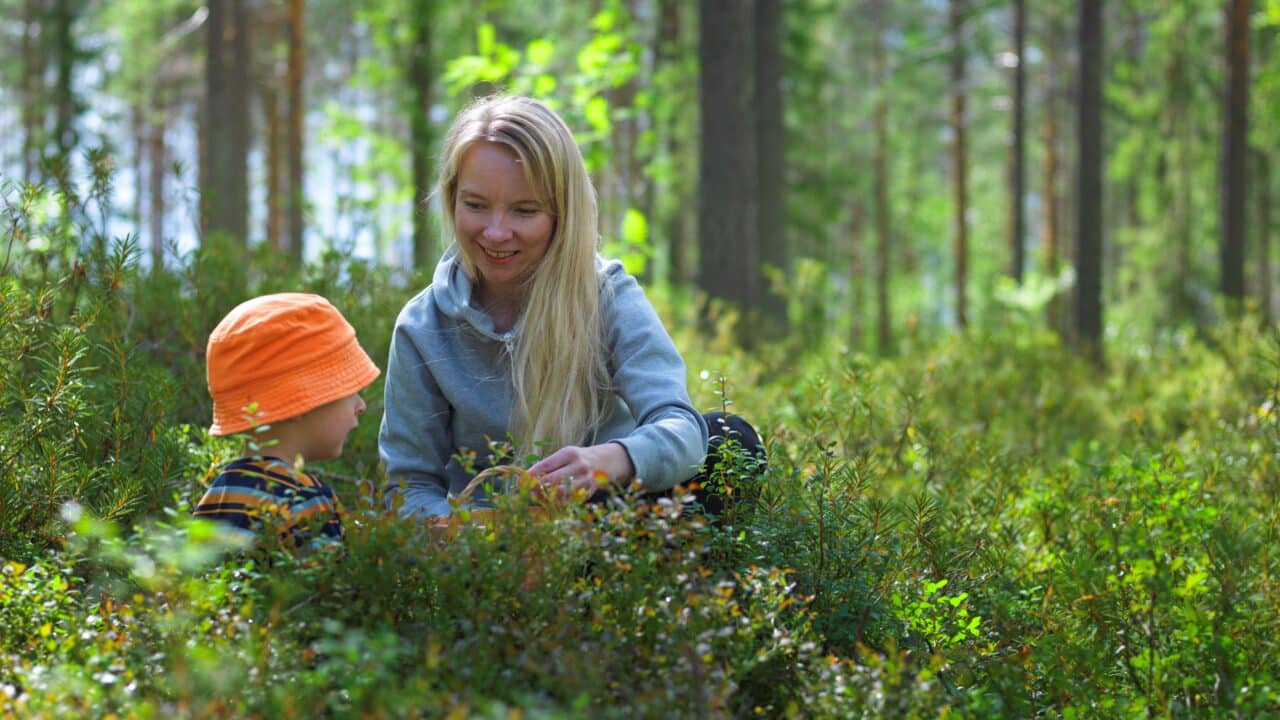
Gathering Mushrooms and Berries
Berries
You can easily find blueberries and lingonberries in coniferous forests throughout Finland. In bogs, cloudberries, cranberries, and bakeapples are commonly picked. Other edible berries include crowberries, mountain ashes, and rowan berries, although these are gathered less often. Experience helps in identifying ripe berries by their color, texture, and the position of their calyx leaves.
Mushrooms
When picking mushrooms, it’s important to be more cautious. Of the thousands of mushroom species growing in Finland, only a few dozen are poisonous to humans.
Pick mushrooms whole and carefully detach them from the ground by twisting and pulling. Harvest them when young and in good condition to ensure they keep well and taste best. Clean and process the mushrooms immediately after picking, preferably already in the forest. Collect mushrooms in a breathable basket or container—never in plastic bags or buckets. It’s best to gather only one species per container and only those you know are safe to eat.
Did You Know?
Mushrooms haven’t only been gathered for food — they are also used for dyeing. The strongest red and orange colors come from blood red mushrooms (Suillellus luridus). Natural materials like wool are especially suitable for dyeing with mushrooms.
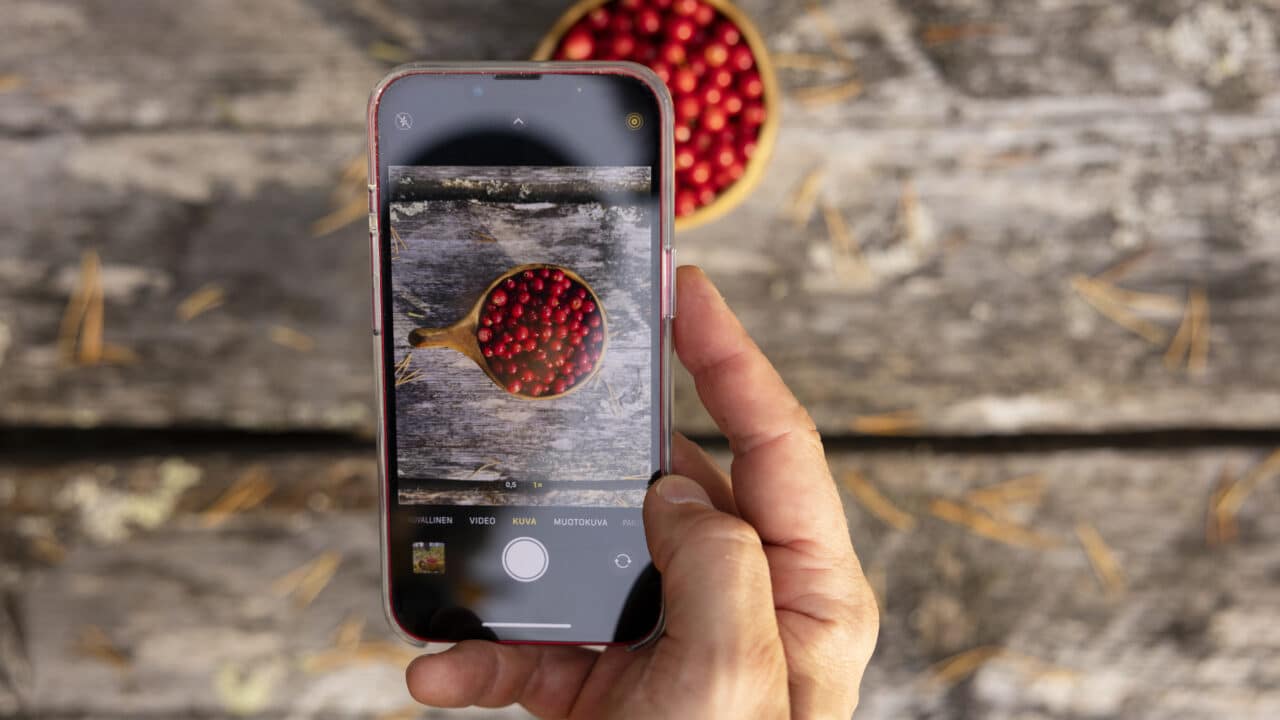
Equipment and Preparation
Equipment
When going berry picking, you’ll need a container to collect the berries and, if you wish, a berry picker. A picker helps you harvest berries like blueberries and lingonberries faster than by hand.
For mushroom foraging, it’s best to bring a breathable container, such as a wicker basket, and possibly a mushroom knife to clean the mushrooms during collection.
Clothing
When heading into the forest, it’s important to be prepared with weather- and terrain-appropriate clothing. For example, if you’re going to a bog to pick cloudberries, rubber boots are advisable, as the soft ground can be unexpectedly sinking. A mosquito net and insect repellent are also handy accessories that add comfort.
Navigation
Especially when exploring a new area, it’s wise to bring some form of navigation tool — either a map and compass or a fully charged GPS device.
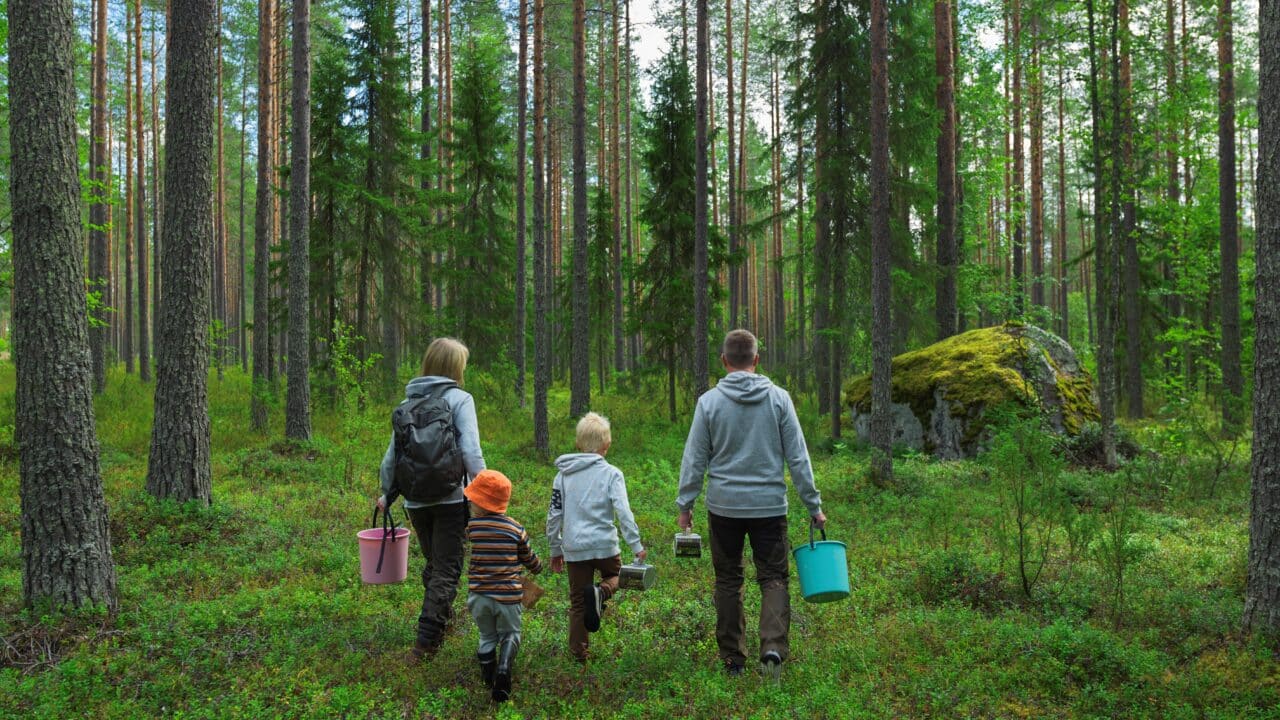
Finding Good Spots
For many, their “own” berry and mushroom spots are closely guarded secrets. People respect others’ picking places, and many will leave an area if they see someone else already harvesting there.
However, the more you go berry picking or mushroom foraging, the better you learn where to go. Knowledge about berry and mushroom gathering has often been passed down orally. If you want to learn how to find mushrooms and berries but have missed out on this oral tradition, there are helpful ways to discover good picking spots.
Check the map for the best berry picking locations in Kuhmo:
https://satokausi.fi/satokausi-kartta/
https://marjahavainnot.fi/#/kartta
https://www.maanmittauslaitos.fi/ajankohtaista/hyvat-marjapaikat-loytyvat-kartoista-ja-ilmakuvilta
Preservation
Preserving Mushrooms
Mushrooms can be preserved in various ways: by drying, freezing, or salting in a brine solution. Before processing, it is important to carefully learn to identify mushroom species. Remember that some mushrooms require special treatment, such as blanching, before use or preservation — always check species-specific instructions for blanching.
Salting in a brine solution is a traditional and effective preservation method that maintains the flavor and texture of the mushrooms. Be sure to follow precise salting instructions before starting.
Salted mushrooms can be used to prepare a variety of dishes. For example, mushrooms seasoned with cream and onions, as well as various stews, remain popular side dishes.
Preserving Berries
It’s best to gather berries to store for the winter. They keep best when frozen or dried. Dried berries can be stored even at room temperature. When freezing, berries can be processed without additives or frozen with sugar to improve preservation and flavor. Berries sweetened with sugar stay delicious in the freezer for about a year.
Berries can also be made into a variety of products such as mashed berries, jams, jellies, or juices, which preserve their flavor for a long time and make them easy to use in cooking and baking.
Part of Cultural Heritage
Gathering food from nature is much older than agriculture. The very first hunter-gatherers who arrived in Finland used berries alongside other natural resources.
Nearly every Finn still remembers childhood berry-picking trips with friends, parents, or grandparents. Many Finns received their first lessons in foraging from their own family or relatives.
Mushroom picking and berry gathering are recognized as part of Finland’s intangible cultural heritage.
(wiki.aineetonkulttuuriperintö.fi, 11.8.2025)
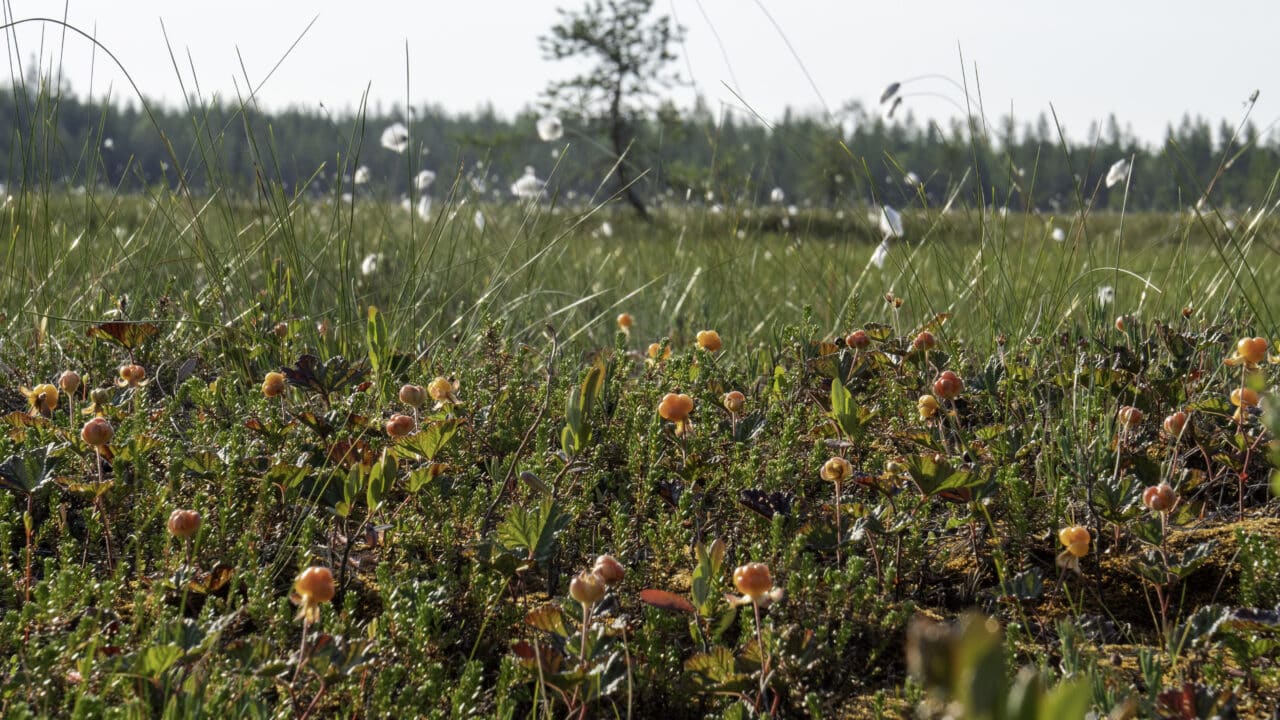
Medicinal Use of Berries in the Past
Today, we mainly use berries for cooking, but in earlier times, they were also used for medicinal purposes.
Juniper berries were especially regarded as a medicinal berry, used to treat rheumatism, aches, and to expel parasites. Oil made from juniper berries was used to relieve fevers and groin abscesses. Juniper was also used for disinfection and wound care. In Muuru, Finland, berries and spirits were believed to ward off plague and cholera.
Cloudberries helped with fever, tuberculosis, and scurvy. Cranberries were used to prevent scurvy, reduce fever, and treat parasites in children. Cranberry syrup was sold in pharmacies as a stomach remedy.
The earliest written evidence of the use of berries in Finnish medicine dates back to the 15th century herb book of Naantali Monastery.
(Source: wiki.aineetonkulttuuriperintö.fi, 11.8.2025)
Explore
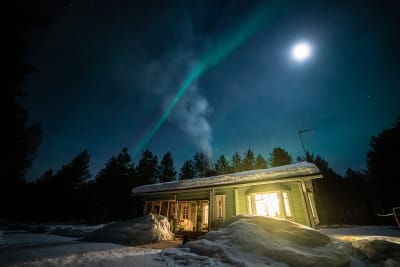
Life in Bearlands – Introduction to Finnish Lifestyle + Nature Tour
Joukonlahdentie 85, 88900 Kuhmo Get to know more
